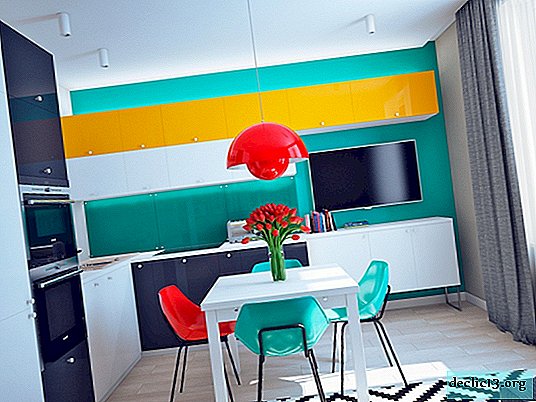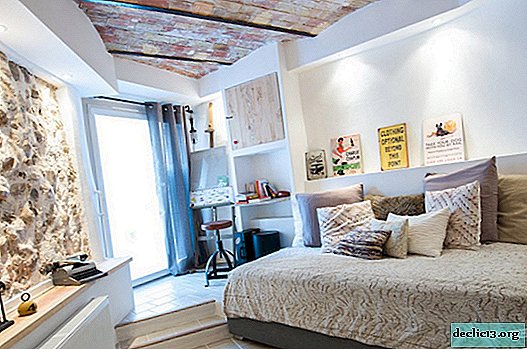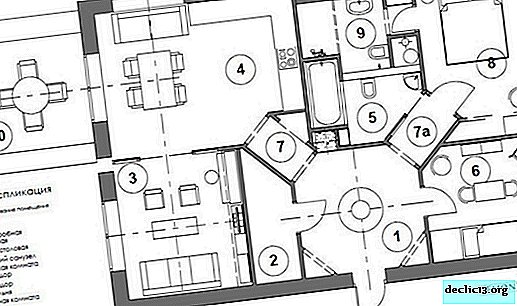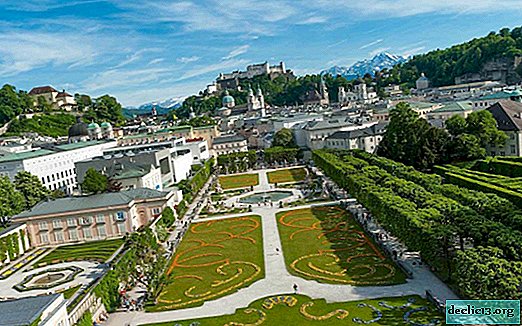Oslo metro and city transport. Oslo pass
Oslo Metro is called Tunnelbane or T-Banen, a network of six lines connecting in the center of the capital and gradually diverging to the outskirts. Only 95 stations, 16 of them are underground. The total length of the metro is 80 km; daily, the metro serves about 270 thousand people.
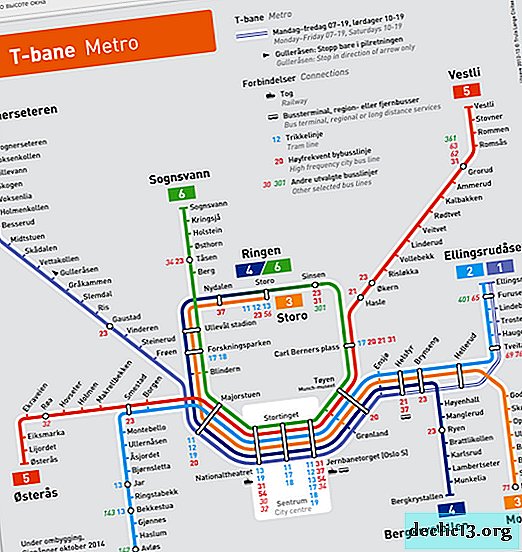
Map of the Oslo metro.
General information

The main feature of the metro is that all directions of high-speed transport converge in the city center, respectively, trains move along the same routes. In remote areas of the capital, trains travel to the surface and become traditional electric trains.
All metro lines have a specific color, serial number, name. The trains consist of 3-4 red cars. The subway, as a rule, is shallow - no more than two dozen steps. There are no escalators in the metro. Distances between stops from 3 to 5 minutes.
Advice! Going on a trip, be sure to print out the metro map in Oslo.
History reference
The idea to build a metro first appeared at the beginning of the 20th century. At this time, Aker commune became part of Oslo. The city expanded, so the authorities decided to unite the capital with vast annexed territories using the metro.

In 1919, the first tram line triumphantly began work, and along with this, a draft of the first underground line located underground was developed. After 9 years, Oslo successfully launched the first subway line. Then the construction of underground lines was suspended and returned to the project only after the end of World War II.
Interesting fact! In May 1966, the construction of the line near the eastern station was completed. The subway begins to work at full strength.

The first line starts from the railway square, passes through Brinseng and continues to Bergkristalen. During the construction process, part of the tram line was connected to the subway. It is noteworthy that the tram line was originally designed with the idea of transforming into a subway.
Then, in 1966, a second direction was launched, which branches off from the first and follows from the Thöyen stop to Gruruddalen. Until 1975, the length of the line was increased, today it ends at Westley stops. The next direction in the past was also the tram line - Jöstensöbönen.
Interesting fact! In the three directions of the underground, only eight stations were underground.
The direction of Furyusetbanen was built in the period from 1970 to 1981. The line has six stations, five of which are underground, while access to the surface at Ellingryudosen station is possible only by elevator.
At the end of the 70s of the 20th century, the city had two independent metro systems - in the east and west of the capital. The city authorities decided to connect them, extending the eastern part to the Central station.

Unfortunately, it was not possible to implement the project, as the new station was constantly leaking. In the early 80s, it was reconstructed and in 1987 launched under the name Sturting (Parliament). The western metro system has been extended to the same station. As a result, a through tunnel was formed through the central part of the capital. However, organizing a through message was technically impossible.
Since 1993, the third rail began to equip all areas of the metro. From 2003 to 2006, construction continued on a ring of 13 metro stations that connect the center of Oslo.

Some subway tunnels pass through the rocks in order to preserve the unique flavor and nature of Norway, it was decided not to use the interior decoration, but to leave the walls made of natural stone. Thus, passengers descend not just into the metro station, but find themselves in a real cave.
Good to know! Entrance and exit is indicated by the letter T. At each stop, a screen is installed where the schedule is displayed, the route of trains. All stops are announced by the drivers.
Schedule and cost of tickets
The Oslo Metro starts at 5-30, trains go to 0-30. The interval between trains varies depending on the distance from the center. The closer to the central areas, the more often trains run - every three minutes. In remote areas, the interval is a quarter of an hour.

Passage for using Oslo's public transport, including the metro, is a card with a magnetic strip. You can buy it in:
- ticket offices located at subway stations;
- machines at metro stations;
- Narvesen kiosks, 7-Eleven, Deli De Luca and Mix stores;
- Ruter customer service center;
- bus terminal in Lillestrom;
- train stations.
Good to know! Tickets entitle you to all types of public transportation in Oslo. The cost is fixed and valid for an hour from the moment of activation. There are no turnstiles in the metro.

Cost:
For one hour:
- adult - from 35 to 123 crowns;
- children and for pensioners - from 18 to 62 kroons.
For a day:
- adult - from 105 to 237 kroons;
- children and for pensioners - from 53 to 119 kroons.

For one week:
- adult - from 249 to 665 kroons;
- children, teenagers and for pensioners - from 125 to 333 kroons.
For one month:
- adult - from 736 to 1874 kroons;
- children and teenagers - from 368 to 568 kroons;
- for pensioners - from 368 to 937 kroons;
- Student - from 442 to 1124 kroons.
For one year:
- adult - from 7360 to 18740 crowns;
- for pensioners - from 3680 to 9370 kroons.
It is important! The cost depends on the number of zones in which the card is valid.
To build the optimal route from point A to point B, using Oslo's public transport here: ruter.no/en.
Compare accommodation prices using this form
Oslo Pass Map

Tourists and guests are surely interested in acquiring the Oslo Pass card, as it has a number of obvious advantages.
- It gives the right to free travel on buses, metro, trams in zones 1 and 2. Please note that the airport is located in the fourth zone, therefore, to get there, you need to buy an additional ticket.
- Free admission to some attractions. Ticket prices range from 50 to 110 kroons, so if you prefer an active holiday, the Oslo Pass card will save you a lot of money.
- Map of Oslo Pass provides discounts on certain excursions, visits to entertainment places:
- excursion to the National Opera House of Norway;
- rest in an amusement park;
- entertaining fjord cruises.
- In summer, Oslo Pass offers free access to the Frognerbadet baths. Oslo Pass gives the right to relax throughout the park, where there are swimming pools, water slides, diving board.
- Oslo Pass also offers free access to the Tøyenbadet, next to the Munch Museum. On the territory of the pool there are pools, a water slide.
Using the Oslo Pass, you can visit national galleries, the most popular museums in Oslo, town halls, and temples.
 National Opera House of Norway
National Opera House of NorwayAlso on Oslo Pass you can visit some restaurants and cafes and get a good discount.
Where to buy Oslo Pass

The easiest way to buy Oslo Pass is to visit the tourist center. Here, together with a map, tourists are told about all the advantages of Oslo Pass and the features of its use. Travel centers operate seven days a week.
Also, the Oslo Pass card can be purchased at:
- hotels, hostels and campsites;
- some museums;
- cafes and restaurants.
Oslo Pass can be booked in advance online. In this case, it is necessary to print a voucher, contact the tourist center (near the central railway station) and get a card with detailed instructions.
Oslo Pass is activated during first use. Its validity period varies:
- day;
- 2 days;
- 3 days.

On the map of Oslo Pass, you must specify the full date and time of the action, as a rule, enter this information with a pen.
Oslo Pass Cost:
Full map:
- day - 40 euros;
- 48 hours - 61 euros;
- 72 hours - 76 euros.
Children (from 4 to 15 years old):
- day - 22 euros;
- 48 hours - 30 euros;
- 72 hours - 38 euros.
For pensioners (over 67 years old):
- day - 32 €;
- 48 hours - 49 €;
- 72 hours - 61 €.
All prices are current as of January 2018.Find out RATES or book any accommodation using this form
We hope that the information on the Oslo metro presented in the article will help you navigate the metro and travel in comfort.

